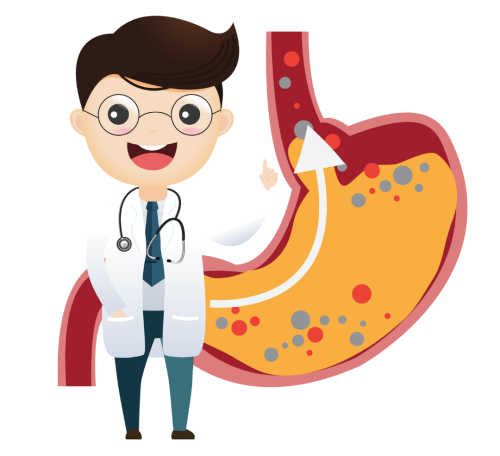Gastroesophageal Reflux & Pulmonary Aspiration
Evaluation of gastro-esophageal reflux (GER) and aspiration
Gastroesophageal reflux (GER) and aspiration are two related conditions that can cause chronic respiratory symptoms in children. GER occurs when stomach contents flow backward into the esophagus, leading to symptoms such as heartburn, regurgitation, and discomfort. Aspiration involves the inhalation of food, liquids, or gastric contents into the lungs, which can lead to serious complications such as pneumonia and chronic respiratory problems. Aspiration can also occur if the child has difficulty in swallowing due to neurological issues.

Diagnostic Methods for Evaluating GER and Aspiration in Children
Pediatricians typically use a combination of clinical history, physical examination, and diagnostic tests to identify the underlying cause of the symptoms. Some of the diagnostic tests include:
Upper GI Series (Barium Swallow): This involves the child swallowing a contrast liquid (barium) while X-rays are taken to visualize the esophagus, stomach, and duodenum.
24-hr pH monitoring: A small probe is inserted through the nose or mouth and positioned in the esophagus to measure the acidity level over a 24-hour period.
Fiberoptic Endoscopic Evaluation of Swallowing (FEES): This is performed for children with suspected aspiration or swallowing dysfunction. This involves the use of a small camera inserted through the nose to visualize the throat and assess swallowing patterns.
Chest X-rays or CT Scans
These tests can help detect signs of aspiration pneumonia and lung damage due to repeated aspiration episodes.
